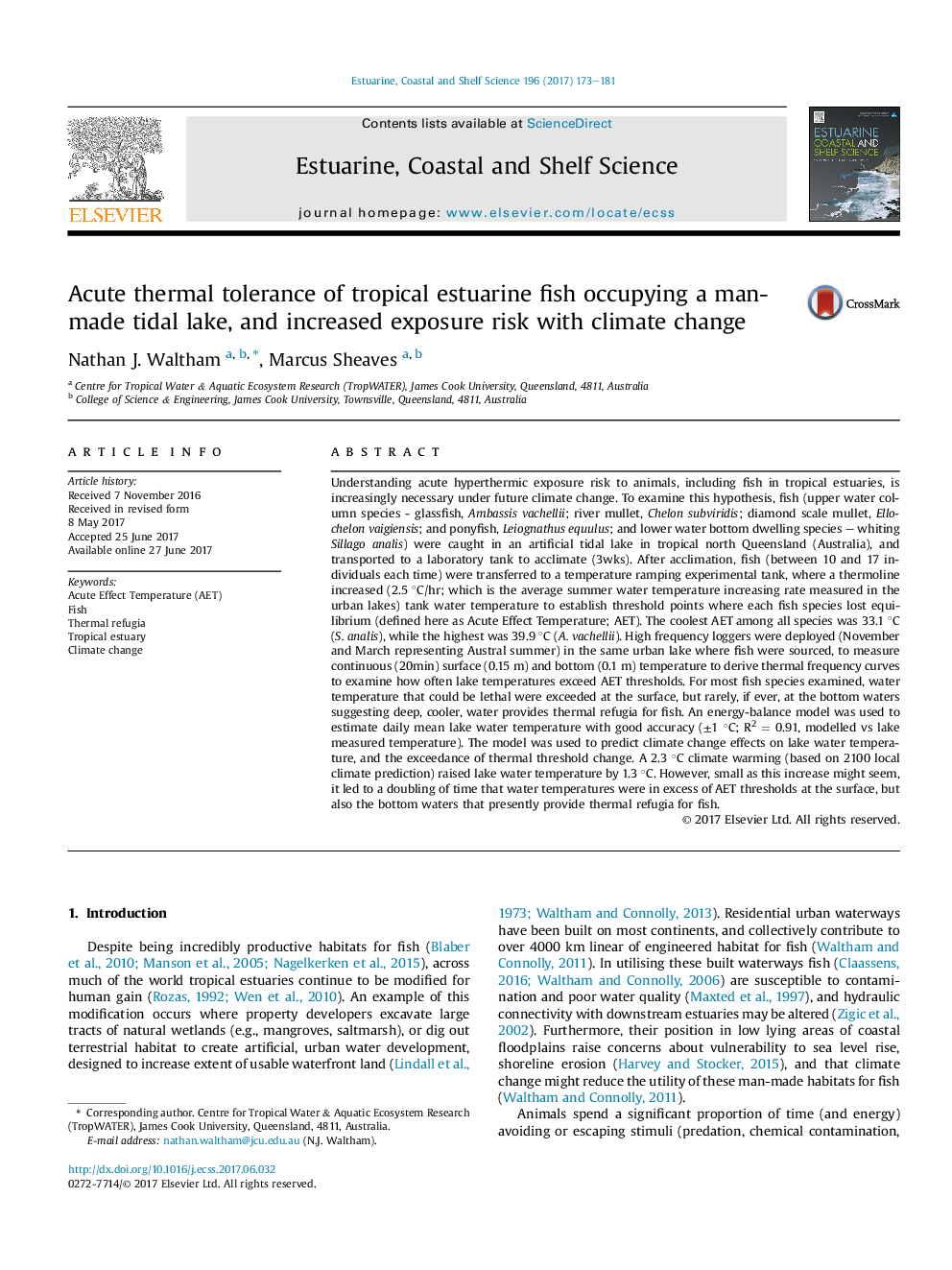| کد مقاله | کد نشریه | سال انتشار | مقاله انگلیسی | نسخه تمام متن |
|---|---|---|---|---|
| 5765151 | 1626606 | 2017 | 9 صفحه PDF | دانلود رایگان |
- Constructed tidal lakes provide new and additional habitat for fish.
- Summer lake surface water temperature frequency exceeded acute thresholds for fish.
- Summer lake bottom water provide important thermal refugia for fish.
- Future climate change will double surface acute thermal exposure.
- Current bottom water refugia will almost certainly be reduced under future climate.
Understanding acute hyperthermic exposure risk to animals, including fish in tropical estuaries, is increasingly necessary under future climate change. To examine this hypothesis, fish (upper water column species - glassfish, Ambassis vachellii; river mullet, Chelon subviridis; diamond scale mullet, Ellochelon vaigiensis; and ponyfish, Leiognathus equulus; and lower water bottom dwelling species - whiting Sillago analis) were caught in an artificial tidal lake in tropical north Queensland (Australia), and transported to a laboratory tank to acclimate (3wks). After acclimation, fish (between 10 and 17 individuals each time) were transferred to a temperature ramping experimental tank, where a thermoline increased (2.5 °C/hr; which is the average summer water temperature increasing rate measured in the urban lakes) tank water temperature to establish threshold points where each fish species lost equilibrium (defined here as Acute Effect Temperature; AET). The coolest AET among all species was 33.1 °C (S. analis), while the highest was 39.9 °C (A. vachellii). High frequency loggers were deployed (November and March representing Austral summer) in the same urban lake where fish were sourced, to measure continuous (20min) surface (0.15 m) and bottom (0.1 m) temperature to derive thermal frequency curves to examine how often lake temperatures exceed AET thresholds. For most fish species examined, water temperature that could be lethal were exceeded at the surface, but rarely, if ever, at the bottom waters suggesting deep, cooler, water provides thermal refugia for fish. An energy-balance model was used to estimate daily mean lake water temperature with good accuracy (±1 °C; R2 = 0.91, modelled vs lake measured temperature). The model was used to predict climate change effects on lake water temperature, and the exceedance of thermal threshold change. A 2.3 °C climate warming (based on 2100 local climate prediction) raised lake water temperature by 1.3 °C. However, small as this increase might seem, it led to a doubling of time that water temperatures were in excess of AET thresholds at the surface, but also the bottom waters that presently provide thermal refugia for fish.
Journal: Estuarine, Coastal and Shelf Science - Volume 196, 5 September 2017, Pages 173-181
